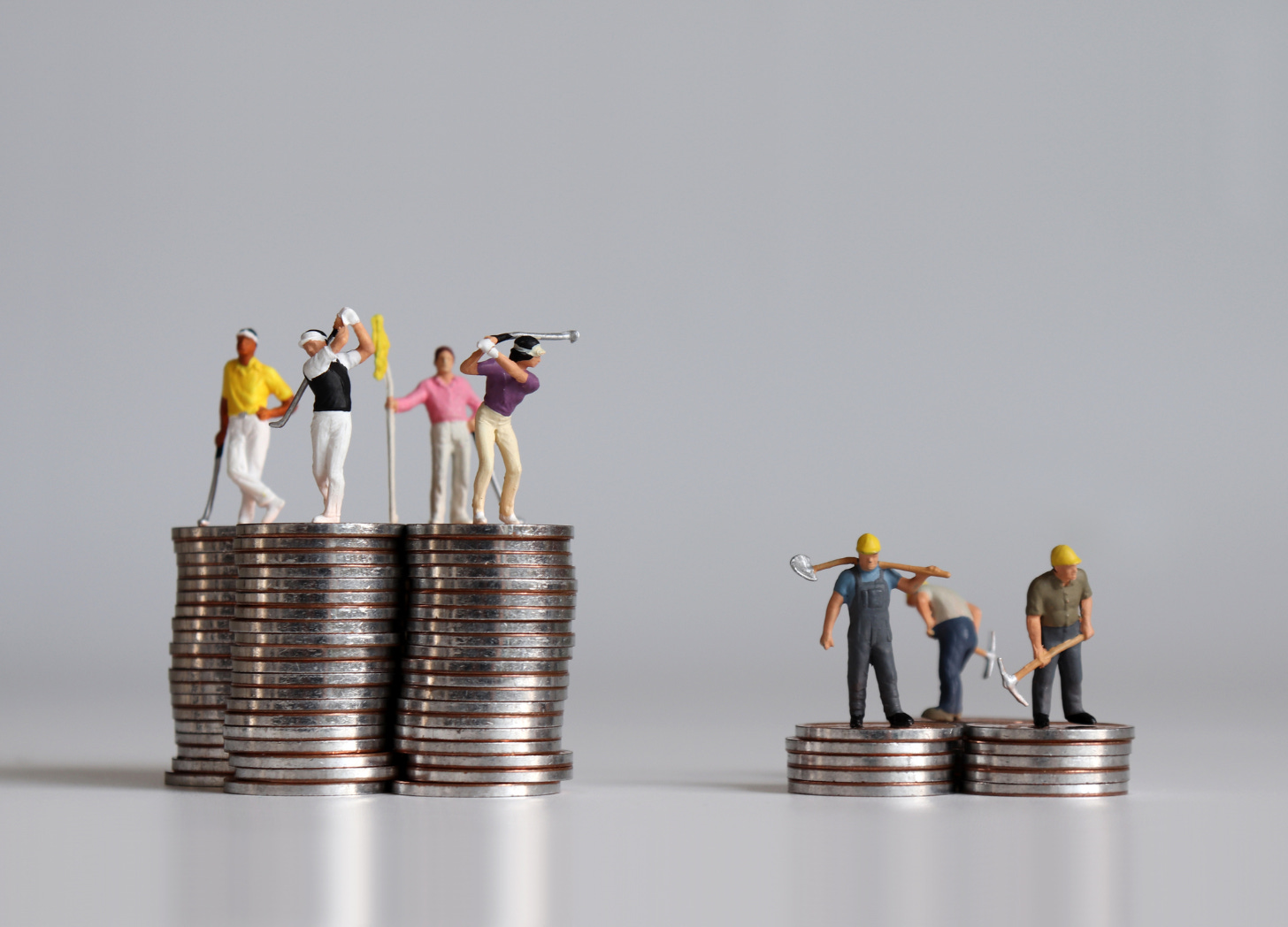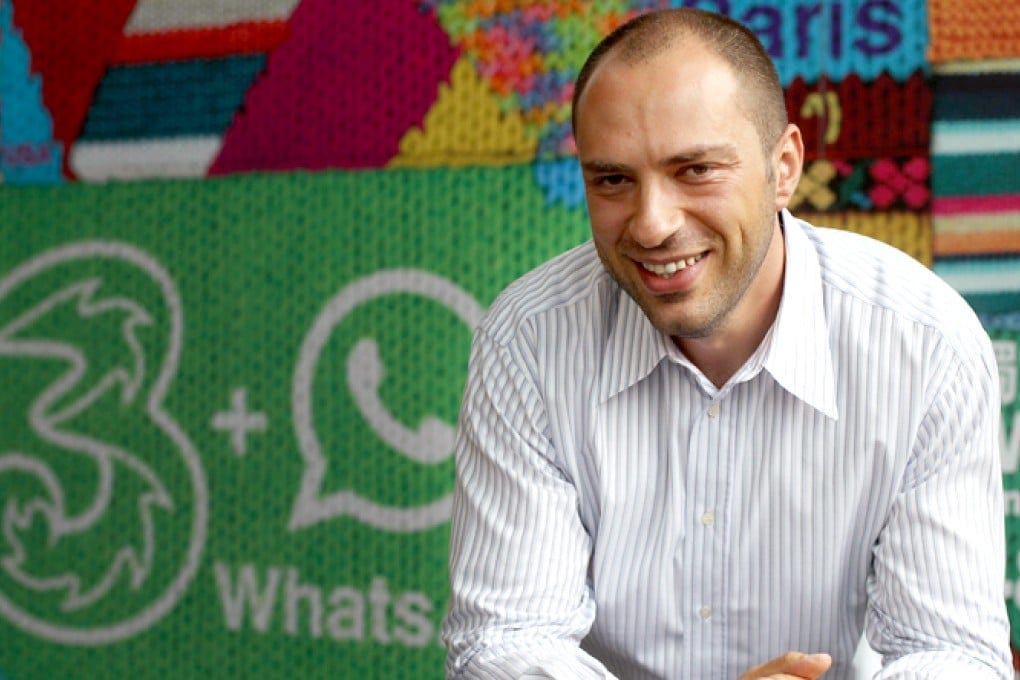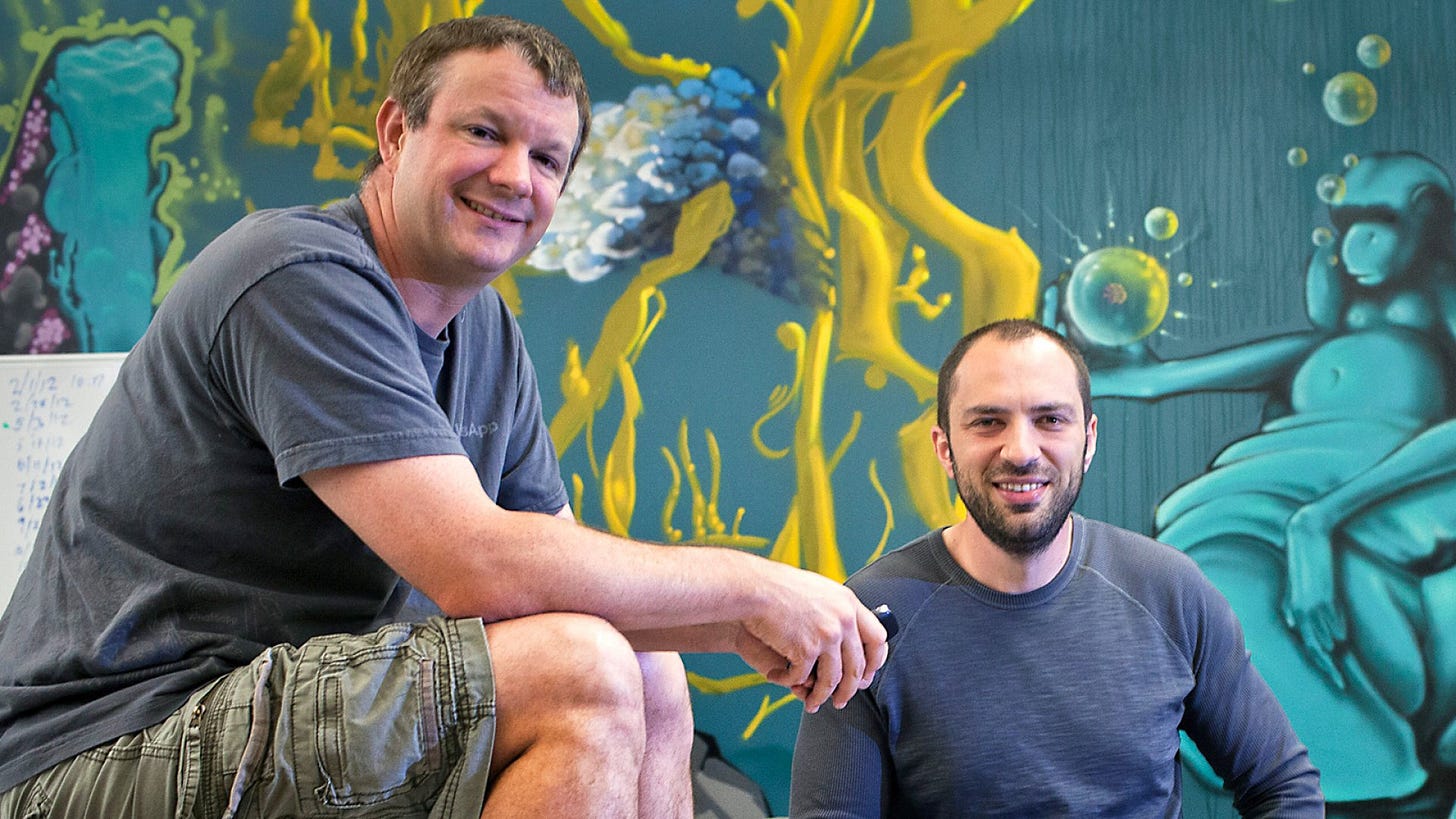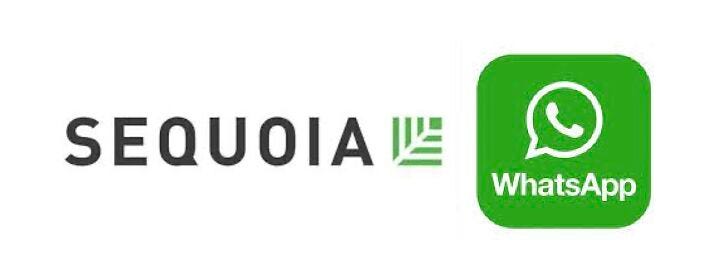What Is Equity Anyway?
Imagine you bake a cake. If it’s your cake, you own 100% of it. That’s equity - it just means “ownership.”
Now imagine your friend helps you bake it. You might give them 30% of the cake because they helped. Now you own 70% and they own 30%. You both have an equal stake in the cake.
Startup equity works the same way, except instead of cake, it’s a company. And instead of eating it, you hope it becomes extremely valuable so you can sell your piece for a lot of money.
Let’s look at two real stories to see how this works.
Story 1:
WhatsApp - One Guy’s Journey from Broke to Billionaire
Meet Jan Koum.
Jan came to America from Ukraine when he was 16. His family was so poor that they had to collect food stamps. He taught himself computer programming and eventually got a job at Yahoo.
In 2009, he had an idea: what if people could send messages on their phones without paying their phone company? He called it WhatsApp.
Chapter 1: Starting Alone (2009)
Jan starts with his own money - about $250,000 he saved from working at Yahoo.
Who owns WhatsApp?
Jan: Everything (100%)
Everyone else: Nothing (0%)
At this point, WhatsApp is worth almost nothing. Jan owns the entire company, but the company isn’t making any money yet.
Think of it like this: Jan owns a tiny food cart. It’s 100% his, but it only makes $20 a day.
Chapter 2: Getting a Partner (2009)
Jan realizes he needs help. He calls his old friend from Yahoo, Brian Acton, who’s really good at the business side of things.
Brian says, “I’ll help you, but I want to own part of it too.”
They make a deal:
Jan keeps 70%
Brian gets 30%
Why this split?
Jan had the idea first
Jan did the early work alone
But Brian is bringing important skills and some money
Think of it like this: Jan says to Brian, “This food cart is all mine, but if you help me turn it into a real restaurant, I’ll give you 30% of the restaurant.”
Jan gives up some ownership to get help. Is that bad? Let’s keep reading...
Chapter 3: Hiring People (2010-2011)
WhatsApp is growing! They need engineers to write code and people to help customers. But there’s a problem: they can’t afford to pay big salaries like Google or Facebook.
Solution: They give employees small pieces of ownership instead of high salaries.
They create what’s called an “employee stock option pool ” - basically setting aside 10% of the company for employees.
New ownership:
Jan: 63%
Brian: 27%
Future employees: 10%
Notice: Jan and Brian’s percentages went down (Jan from 70% to 63%, Brian from 30% to 27%). But here’s the key - the company is also getting more valuable because it now has talented people building it.
Think of it like this: Jan and Brian’s slices of cake got a bit smaller, but the cake itself is getting bigger because they have more people baking.
Chapter 4: Getting Investment Money (2011)
WhatsApp needs serious money now. They need powerful computer servers, office space, and money to pay people at least a salary.
A famous investment firm called Sequoia Capital says, “We love your company. We’ll give you 8 million dollars. In exchange, we want to own 15% of your company.”
Jan and Brian think about it: “If we say yes, we’ll own less. But we’ll have $8 million to grow really fast.”
They say yes.
New ownership:
Jan: about 54%
Brian: about 23%
Employees: about 8%
Sequoia Capital: 15%
Here’s the magic part:
Before this investment, Jan owned 63% of a company that was worth maybe $50 million. That means his piece was worth about $31 million.
After this investment, Jan owns 54% of a company that’s now worth $65 million. That means his piece is worth about $35 million.
His percentage went DOWN, but his actual wealth went UP!
Chapter 5: Growing Like Crazy (2011-2014)
Over the next three years, WhatsApp grows to 450 million users. That’s almost as many people as live in the entire United States and Europe combined!
They keep raising more investment money and giving away small pieces of ownership to get that money. Each time, Jan’s percentage goes down a little bit, but the company’s value goes up a lot.
Chapter 6: Facebook Comes Calling (2014)
Mark Zuckerberg calls Jan: “I want to buy WhatsApp for 19 billion dollars.”
$19 BILLION. It’s one of the biggest tech deals in history.
Final ownership at the sale:
Jan: 45% = $8.5 BILLION
Brian: 20% = $3.8 BILLION
Employees: 12% = $2.3 BILLION
Sequoia: 23% = $4.4 BILLION
The Big Lesson from Jan’s Story
Jan started with 100% of basically nothing.
He gave away pieces to Brian, to employees, to investors.
He ended with only 45% ownership.
But that 45% made him 8.5 BILLION DOLLARS.
If he had kept 100% and never shared, WhatsApp probably would have failed. He’d have 100% of zero, which is still zero.
Instead, he shared ownership smartly and became one of the richest people in the world.
Story 2:
Airbnb - Three Friends Who Couldn’t Pay Rent
Meet the Founders
In 2007, Brian Chesky and Joe Gebbia were roommates in San Francisco. They had a problem: rent was $1,150 per month, and they couldn’t afford it.
They had a crazy idea: “What if we rent out air mattresses in our apartment to people visiting the city?”
They built a simple website. A few people actually came and slept on their air mattresses. They called it “Air Bed and Breakfast.”
Later, they brought in Brian’s friend Nathan Blecharczyk, a programmer, to build a real website.
Chapter 1: The Beginning (2008) - Splitting It Three Ways
The three friends decide how to split ownership of this new company:
Brian Chesky: 40% - He’s going to be the CEO (the main leader)
Joe Gebbia: 35% - He had the original idea and designed everything
Nathan Blecharczyk: 25% - He came in later but built all the technology
Why these numbers?
Brian gets the most because being CEO is the hardest job and biggest responsibility
Joe gets a lot because it was his idea
Nathan gets a bit less because he joined later, but it’s still a huge amount
Think of it like this: Three friends open a restaurant together. The head chef (Brian) gets the biggest share because the whole thing depends on him. The person who came up with the restaurant concept (Joe) gets a bit less. And the person managing the operations (Nathan) gets a meaningful but smaller piece.
Everyone agrees this is fair.
Chapter 2: The Struggle Years (2008-2009) - Almost Going Broke
Here’s the thing nobody tells you about startups: most of them almost fail at the beginning.
Airbnb was dying. Almost nobody was using it. The founders were so broke they couldn’t afford to eat.
They came up with a desperate plan: they made cereal boxes themed around the 2008 presidential election. “Obama O’s” and “Cap’n McCain’s.” They sold them for $40 a box to political nerds.
They made $30,000 selling cereal. That’s how broke they were.
At this point, most people would have quit. But they kept going.
Ownership stayed the same:
Brian: 40%, Joe: 35%, Nathan: 25%
Chapter 3: Someone Finally Believes in Them (2009)
They got into Y Combinator, a famous program that helps new startups. Y Combinator gave them $20,000 and advice.
More importantly, Y Combinator helped them raise $7.2 million from investors who actually believed in the idea.
The deal:
Investors gave them: $7.2 million in cash
Investors get: 24% ownership of Airbnb
The founders keep: 76% (split among the three of them)
New ownership:
Brian: 30.4% (his 40% became smaller)
Joe: 26.6% (his 35% became smaller)
Nathan: 19% (his 25% became smaller)
Investors: 24%
But here’s what really happened:
BEFORE the investment:
Brian owned 40% of a company worth almost nothing = $0
AFTER the investment:
Brian owns 30.4% of a company worth $30 million = about $9 million
PLUS, they have $7.2 million in the bank to grow the business
His percentage decreased, but his actual wealth increased significantly. And now they can afford to eat!
Think of it like this: You own a lemonade stand worth $10. Someone gives you $100 to expand to five stands, but they want to own part of it. Your percentage goes down, but now you’re part-owner of something worth $110 instead of $10. That’s a win!
Chapter 4: The Growth Explosion (2010-2017)
Once Airbnb secured funding and established its business, it grew rapidly.
People all over the world wanted to rent out their homes to travelers. Airbnb made it easy.
Every year or two, they needed more money to expand to new countries and hire more people. So they kept raising money from investors:
2010: They raised $7.2 million more. The company is now valued at $73 million. 2011: They raised $112 million. The company is now valued at $1.3 billion. 2014: They raised $475 million. The company is now valued at $10 billion. 2017: They raised $1 billion. The company is now valued at $31 billion.
Each time they raised money, the three founders owned a smaller percentage. But each time, that percentage was worth more actual dollars.
Chapter 5: Becoming Billionaires (2020)
December 2020. Middle of the pandemic. Travel is basically dead. Everyone thinks Airbnb is doomed.
They decide to go public anyway - meaning anyone can buy shares in the company on the stock market.
Opening day of the IPO:
Airbnb is valued at $47 billion
Later, it goes even higher, peaking at over $100 billion
Final ownership:
Brian Chesky: 11% = $5.2 billion
Joe Gebbia: 11% = $5.2 billion
Nathan Blecharczyk: 11% = $5.2 billion
The Mind-Blowing Math
Let’s look at what happened to Brian over 12 years:
2008: Owns 40% of $0 = $0 (actually in debt, selling cereal to survive)
2020: Owns 11% of $47 billion = $5.2 billion
His percentage went DOWN by 29 percentage points.
His wealth went UP by $5.2 BILLION.
The Big Lesson from Airbnb’s Story
The three founders started with 100% of an idea that was failing.
They gave away pieces to get money and help.
They each ended up with only 11% of the company.
But that 11% made each of them $5+ BILLION DOLLARS.
If they had refused to share ownership and never taken investment money, Airbnb would have died in 2009. They would have 100% of a dead company, which equals zero dollars.
Instead, they were smart about sharing ownership, and all three became billionaires.
The Simple Truth About Startup Equity
Both stories teach us the same lesson:
Don’t be greedy with percentages. Be smart about building value.
The Sharing Formula
Successful founders share ownership with:
Co-founders - People who have skills you don’t have
Employees - Talented people who help build the company
Investors - People who give you money to grow faster
Each time you share, your percentage gets smaller.
But if you’re smart about WHO you share with, the total value gets bigger MUCH faster than your percentage shrinks.
Real Talk: Why This Matters
Jan Koum was a poor immigrant who owned 45% of his company and made $8.5 billion.
Brian, Joe, and Nathan couldn’t afford rent and each owned 11% of their company and made $5+ billion each.
None of them cared about owning 100%. They cared about building something massive.
That’s the secret: a small slice of a huge pie beats a large slice of a tiny pie, every single time.
Coming Up Next :
We’ll dive into other scenarios founders face—like what happens if one walks away, or if the team needs to re-balance equity later. Stay tuned!
📰 New article drops every Tuesday.







